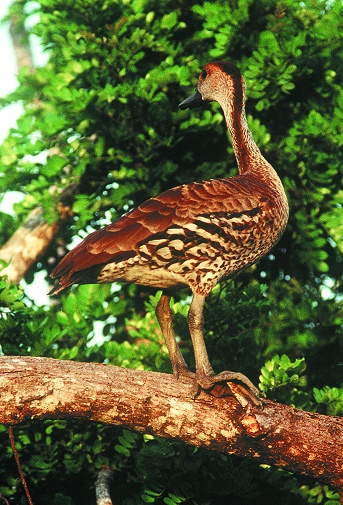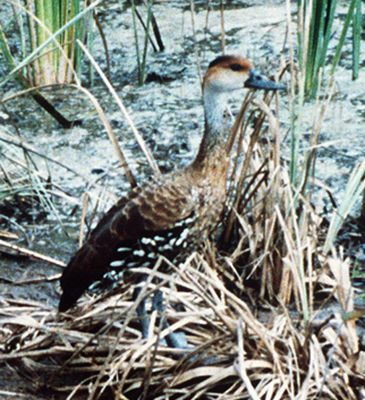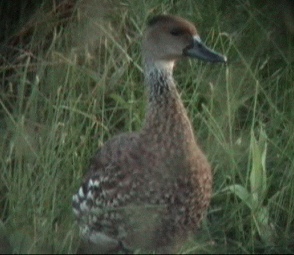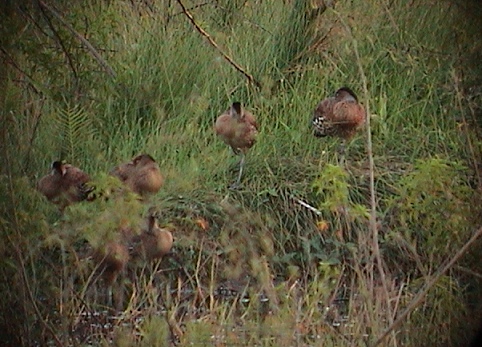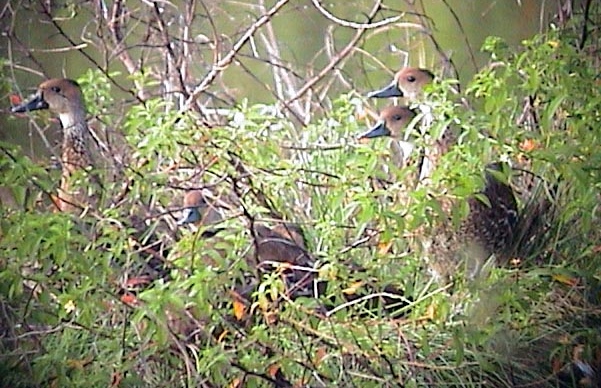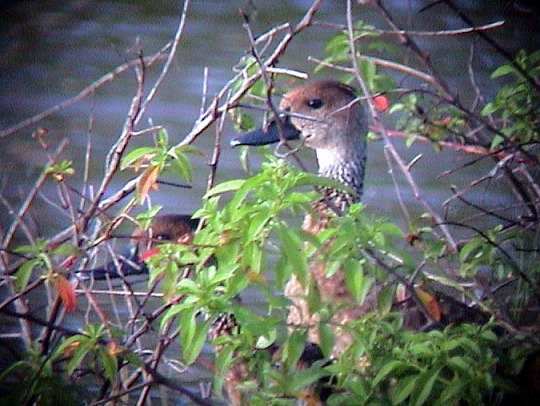| West Indian Whistling-Duck
Dendrocygna arborea Chiriría, |
 |
|
Photo: B. Hallett
|
|
IDENTIFICATION: A nocturnal duck with speckled brown upper parts, and black and white markings on the sides. In flight, it appears all brown above, and its legs extend beyond its tail. Length: 48-58 cm.; weight: 1,150 g. VOICE: The call is a multi-syllable whistle that sounds like its Spanish name, "Chiriría." Audio (R. Rodríguez Mojica). HABITAT: Fresh and saltwater wetlands, including lagoons, rice fields, and palm savannas, especially near mangroves, Pterocarpus, or other swamp-adapted trees. HABITS: Feeds at night on fruits, berries, seeds, grass, rice, and corn, and is particularly fond of the fruit of the royal palm (Roystonea sp.). It feeds both in trees and on the ground, but less often in open water. It roosts during the day in dense grass or trees such as Pterocarpus, where it can be hard to detect with its brown plumage. It nests in tree holes, bromeliads, Panicum grass, in tree stumps, or in clumps of palm leaves, usually near water. The nest contains 6-12 eggs, and the incubation period is about 30 days. STATUS AND CONSERVATION: This species is endangered throughout its range. It was once common in Puerto Rico, with flocks of 100 birds reported. Its population in Puerto Rico is maybe only 250, but exact population levels are difficult to establish because many wetland areas where it formerly lived are difficult to survey. Hunting for sport, or to control its feeding in grain fields contributed to the dangerous population decline, but hunting this species is now illegal throughout its range. Drainage and filling of wetlands for agriculture, sanitary landfills, housing, roads, and industry are serious threats, as is excessive use of agricultural pesticides. Commonwealth and federal agencies are expanding wetland sanctuaries at Laguna Cartagena and elsewhere to protect its wetland habitat. Throughout its range this species is considered vulnerable to extinction RANGE: Endemic to the Caribbean in the Greater Antilles, Cayman Islands, Bahamas, Turks and Caicos, Virgin Islands, St. Kitts-Nevis, Antigua and Barbuda. In Puerto Rico it has been regularly reported from wetlands at the Humacao Nature Reserve, Torrecilla Alta, Roosevelt Roads Naval Air Station, and Laguna Kiani on Vieques. However, because it roosts during the day and feeds at night, it is often difficult to find. Other Puerto Rican wetlands where it has been reported in the late 20th Century include Sabana Seca, Laguna Cartagena, Aguada, Boquerón, Laguna de Guánica, Tortugero Lagoon, Cabo Caribe Swamp, Cibuco Swamp, Anegado Lagoon, Mona Island, and Caño Tiburones. TAXONOMY: ANSERIFORMES; ANATIDAE; Dendrocygninae |
|
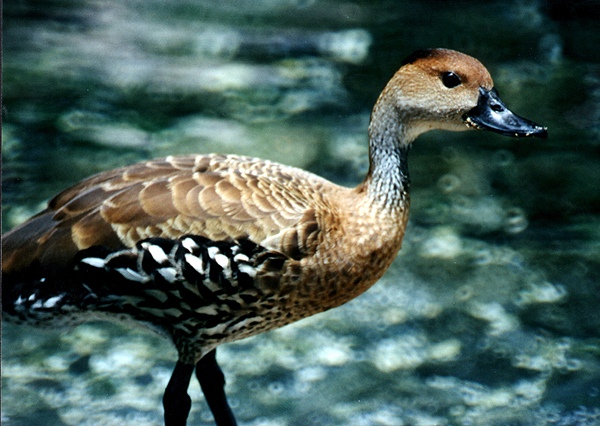 |
|
|
Photo: C. Ruiz*
|
